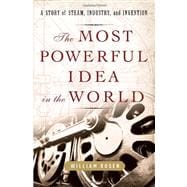
| List of Illustrations | p. xi |
| Prologue | |
| Rocket: concerning ten thousand years, a hundred lineages, and two revolutions xiii | |
| Changes in the Atmosphere | p. 3 |
| concerning how a toy built in Alexandria failed to inspire, and how a glass tube made in Italy succeeded | |
| the spectacle of two German hemispheres attached to sixteen German horses | |
| and the critical importance of nothing at all | |
| A Great Company of Man | p. 18 |
| concerning the many uses of a piston | |
| how the world's first scientific society was founded at a college with no students | |
| and the inspirational value of armories, Nonconformist preachers, incomplete patterns, and snifting values | |
| The First and True Inventor | p. 43 |
| concerning a trial over the ownership of a deck of playing cards | |
| a utopian fantasy island in the South Seas | |
| one Statute and two Treatises | |
| and the manner in which ideas were transformed from something one discovers to something one owns | |
| A Very Great Quantity of Heat | p. 67 |
| concerning the discovery of fatty earth | |
| the consequences of the deforestation of Europe | |
| the limitations of waterpower | |
| the experimental importance of a Scotsman's ice cube | |
| and the search for the most valuable jewel in Britain | |
| Science in his Hands | p. 90 |
| concerning the unpredictable consequences of sea air on iron telescopes | |
| the power of the cube-square law | |
| the Incorporation of Hammermen | |
| the nature of insight | |
| and the long-term effects of financial bubbles | |
| The Whole thing was arranged in my Mind | p. 115 |
| concerning the surprising contents of a Ladies Diary | |
| invention by natural selection | |
| the Flynn Effect | |
| neuronal avalanches | |
| the critical distinction between invention and innovation | |
| and the memory of a stroll on Glasgow Green | |
| Master of them All | p. 135 |
| concerning differences among Europe's monastic brotherhoods | |
| the unlikely contribution of the brewing of beer to the forging of iron | |
| the geometry of crystals | |
| and an old furnace made new | |
| A Field that is Endless | p. 158 |
| concerning the unpredictable consequences of banking crises | |
| a Private Act of Parliament | |
| the folkways of Cornish miners | |
| the difficulties in converting reciprocating into rotational motion | |
| and the largest flour mill in the world | |
| Quite Splendid with a File | p. 189 |
| concerning the picking of locks | |
| the use of wood in the making of iron, and iron in the making of wood | |
| the very great importance of very small errors | |
| blocks of all shapes and sizes | |
| and the tool known as "the Lord Chancellor" | |
| To Give England the Power of Cotton | p. 212 |
| concerning the secret of silk spinning | |
| two men named Kay | |
| a child called Jenny | |
| the breaking of frames | |
| the great Cotton War between Calcutta and Lancashire | |
| and the violent resentments of stocking knitters | |
| Wealth of Nations | p. 248 |
| concerning Malthusian traps and escapes | |
| spillovers and residuals | |
| the uneasy relationship between population growth and innovation | |
| and the limitations of Chinese emperors, Dutch bankers, and French revolutionaries | |
| Strong Steam | p. 271 |
| concerning a Cornish Giant, and a trip up Camborne Hill | |
| the triangular relationship between power, weight, and pressure | |
| George Washington's flour mill and the dredging of the Schuylkill River | |
| the long trip from Cornwall to Peru | |
| and the most important railroad race in history | |
| Epilogue: The Fuel of Interest | p. 311 |
| Acknowledgments | p. 325 |
| Notes | p. 329 |
| Index | p. 355 |
| Table of Contents provided by Ingram. All Rights Reserved. |
The New copy of this book will include any supplemental materials advertised. Please check the title of the book to determine if it should include any access cards, study guides, lab manuals, CDs, etc.
The Used, Rental and eBook copies of this book are not guaranteed to include any supplemental materials. Typically, only the book itself is included. This is true even if the title states it includes any access cards, study guides, lab manuals, CDs, etc.